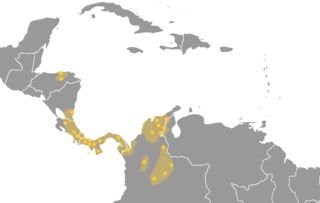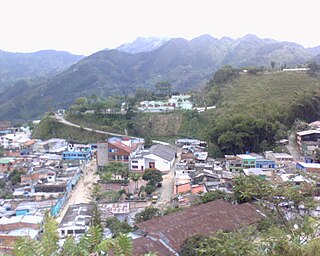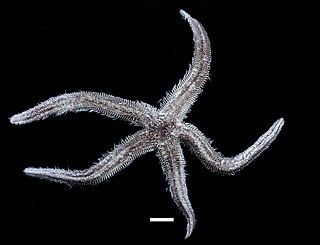
Kira Roessler is an American musician who was the bass guitarist for the influential hardcore punk band Black Flag from 1983 to 1985. Since the mid-1980s, she has been a member of the rock duo Dos with her ex-husband Mike Watt.

The Chibchan languages make up a language family indigenous to the Isthmo-Colombian Area, which extends from eastern Honduras to northern Colombia and includes populations of these countries as well as Nicaragua, Costa Rica, and Panama. The name is derived from the name of an extinct language called Chibcha or Muysccubun, once spoken by the people who lived on the Altiplano Cundiboyacense of which the city of Bogotá was the southern capital at the time of the Spanish Conquista. However, genetic and linguistic data now indicate that the original heart of Chibchan languages and Chibchan-speaking peoples might not have been in Colombia, but in the area of the Costa Rica-Panama border, where the greatest variety of Chibchan languages has been identified.
dos is an American rock group composed of Mike Watt and Kira Roessler, who both sing and play bass guitar. Critic Greg Prato describes their unusual instrumentation as "a haunting yet intriguing and original sound."

Cañasgordas is a town and municipality in Antioquia Department, Colombia. The population was 13,595 at the 2018 census.

Carepa is a town and municipality in Antioquia Department, Colombia. Carepa is part of the Urabá Antioquia sub-region.

Frontino is a municipality in the Colombian department of Antioquia. The population was 20,156 at the 2018 census.

Venecia is a town and municipality in Antioquia Department, Colombia. According to the 2018 census, the population comprised 10,280 people.

San Rafael is a town and municipality in Antioquia Department, Colombia. Part of the subregion of Eastern Antioquia.

Vélez is a town and municipality of the Santander Department in northeastern Colombia.

Chinácota is a small town and municipality located in the Department of Norte de Santander in Colombia, South America. This department is located in the north-eastern region of the country, near the border with Venezuela. Chinácota has a population of approximately 15,000 people according to the 2005 Colombian census.

Growth differentiation factor 1 (GDF1) is a protein that in humans is encoded by the GDF1 gene.

Quípama is a town and municipality in the Colombian Department of Boyacá, part of the subregion of the Western Boyacá Province.

Chita is a town and municipality in the Colombian Department of Boyacá, part of the Valderrama Province a subregion of Boyaca in Colombia.
Ilchunaia is an extinct genus of sebecid mesoeucrocodylian. Fossils have been found from the Divisadero Largo Formation of Argentina dating back to the Late Eocene, and a locality in Mendoza, Argentina dating back to the Oligocene. Little material is known from the genus, with only the anterior portion of the skull being present to study.

Luidia superba is a tropical species of starfish in the family Luidiidae. A single specimen was found off the Pacific coast of Colombia in 1888; the species has since been found in the Galapagos Islands. It is endemic to this area and has not been recorded elsewhere.

Ischnosiphon is a genus of plants native to Central America, South America, Trinidad and the Lesser Antilles. It was first described as a genus in 1859.
Chlamydotheca is a genus of freshwater ostracods in the family Cyprididae. About 36 species are known to occur throughout continental waters. Four species are found in Argentina.
Chlamydotheca elegans is a species of freshwater ostracods in the family Cyprididae. It is found in Colombia.

Gryllotalpa septemdecimchromosomica is a species of mole cricket, in the G. gryllotalpa species group, found in Spain and France: where it may be known as le courtillière Provençale. No subspecies are listed in the Catalogue of Life.

Collin Yvès Ewald is a Swiss scientist investigating the molecular mechanisms of healthy aging. He is a molecular biologist and a professor at ETH Zurich, where he leads the Laboratory of Extracellular Matrix Regeneration. His research focuses on the remodeling of the extracellular matrix during aging and upon longevity interventions.















